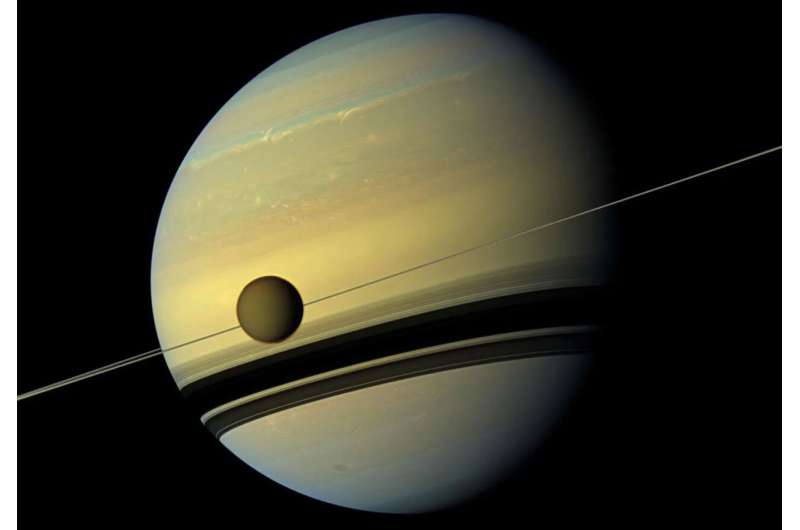Southwest Research Institute (SwRI) scientists are studying Saturn’s moon Titan to assess its tidal dissipation rate, the energy lost as it orbits the ringed planet with its massive gravitational force. Understanding tidal dissipation helps scientists infer many other things about Titan, such as the makeup of its inner core and its orbital history.
“When most people think of tides they think of the movement of the oceans, in and out, with the passage of the moon overhead,” said Dr. Brynna Downey. “But that is just because water moves more freely than anything else. When the moon passes overhead, the rock is also responding, just less perceptively. But that little bit of gravity that the moon is imposing is what we call tidal dissipation.”
Downey is a postdoctoral researcher at SwRI’s Solar System Science and Exploration Division in Boulder, Colorado and is lead author of a paper on this topic published in the journal Science Advances.
To measure tidal dissipation on the moon, scientists shoot lasers from Earth at mirrors placed across its surface. This allows them to accurately measure the slightest movement. As this cannot be done on Titan, scientists have instead developed a way to infer dissipation rates based on the difference in Titan’s spin axis rotation from what would be expected absent any such force.
“Tidal dissipation in satellites affects their orbital and rotational evolution and their ability to maintain subsurface oceans,” Downey says. “Now that we have an estimate for the strength of tides on Titan, what does it tell us about how quickly the orbit is changing? What we discovered is that it’s changing very quickly on a geologic timescale.”

Downey and her co-author, Dr. Francis Nimmo of the University of California Santa Cruz, considered that the angle of Titan’s spin pole orientation can only be due to friction and deduced a way to relate this angle to a tidal friction parameter. In this way, they were able to deduce some of the history of Titan from its current spin state. With future space missions planned to various moons such as Europa and Ganymede, two moons of Jupiter, Downey hopes that this method can be applied to other moons as well.
Friction in a satellite’s interior causes it to slowly progress toward a circular orbit. At the rate its orbit is changing, Titan should have acquired a circular orbit within about 350 million years. The fact that Titan currently has a noncircular or eccentric orbit implies that something occurred within the past 350 million years that perturbed its orbit.
“Any number of things, such as an impact or loss of an ancient satellite, could have affected the orbit and made it eccentric; our findings are agnostic as to the nature of the event, and others have proposed several options,” Downey said.
“The bottom line is that we think something has disturbed Titan’s orbit within the last 350 million years, which is relatively recent in solar system history. We are looking at a snapshot in time between that event and the point when it reaches a circular orbit again.”
More information:
Brynna G. Downey et al, Titan’s spin state as a constraint on tidal dissipation, Science Advances (2025). DOI: 10.1126/sciadv.adl4741
Citation:
Tidal energy measurements help scientists understand Titan’s composition and orbital history (2025, February 12)
retrieved 12 February 2025
from https://phys.org/news/2025-02-tidal-energy-scientists-titan-composition.html
This document is subject to copyright. Apart from any fair dealing for the purpose of private study or research, no
part may be reproduced without the written permission. The content is provided for information purposes only.

